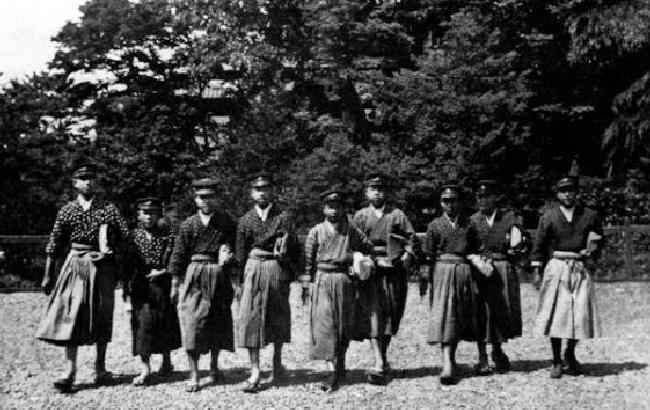
Figure 1.--We see some images like this one in 1920 with boys wearing traditional clothes. We are not sure if this was their normal school wear or a kind of special dress for martial arts like kendo. Notice the modern military caps.

We note Japanese boys wearing a variety of clothes in the early 20th century. We see Japanese boys wearing both traditional and Western clothing. We note a variety of Western clothes. After the turn of the century we see boys at some primary schools replacing knee pants with longish shorts and long stockings with knee socks. These clothing changes may simply reflect overall fashion shifts. Boys seem to have worn Prussian-military caps even at schools that did not have uniforms. We note images showing boys wearing traditional clothes. We do not know how common this was or what the conventions were. We see some images like this one in 1920 with boys wearing traditional clothes. We have no information about the specific garments involved in traditional outfits. We re not sure if this was their normal school wear or a kind of special dress for martial arts like kendo (figure 1). This also changed over time. It appears to have been much less common by mid-century than it was at the beginning of the century.
We note a variety of Western clothes. After the turn of the century we see boys at some primary schools replacing knee pants with longish shorts and long stockings with knee socks. These clothing changes may simply reflect overall fashion shifts. Boys seem to have worn Prussian-military caps even at schools that did not have uniforms.
We note images showing boys wearing traditional clothes. We do not know how common this was or what the conventions were. We see some images like this one in 1920 with boys wearing traditional clothes. We have no information about the specific garments involved in traditional outfits. We are not sure if this was their normal school wear or a kind of special dress for martial arts like kendo. The images are common enough that some boys obvuiysky wore them as ordinart schoolwear. We assume that this was particularly common in rural areas, but we also see urban images. We see boys wearing traditional clothes while involved in various activities. The popularity of traditional clothes also changed over time. It appears to have been much less common by mid-century than it was at the beginning of the century.
Related Chronolgy Pages in the Boys' Historical Web Site
[Late 19th century]
[The 1930s]
[The 1940s]
[The 1930s]
[The 1940s]
[The 1950s]
[The 1960s]
[The 1970s]
[The 1980s]
Navigate the Boys' Historical Clothing School Uniform Pages
[Main Japanese school uniform early 20th century chronology Page]
[Australia]
[England]
[France]
[Germany]
[Ireland]
[Italy]
[Japan]
[New Zealand]
[Scotland]
[United States]
Related Style Pages in the Boys' Historical Web Site
[Long pants suits]
[Short pants suits]
[Socks]
[Eton suits]
[Jacket and trousers]
[Blazer]
[School sandals]
Navigate the Boys' Historical Clothing Web Page
[Return to Main school uniform page]
[Introduction]
[Activities]
[Biographies]
[Chronology]
[Cloth and textiles]
[Clothing styles]
[Countries]
[Topics]
[Bibliographies]
[Contributions]
[FAQs]
[Glossaries]
[Images]
[Satellite sites]
[Tools]
[Boys' Clothing Home]
